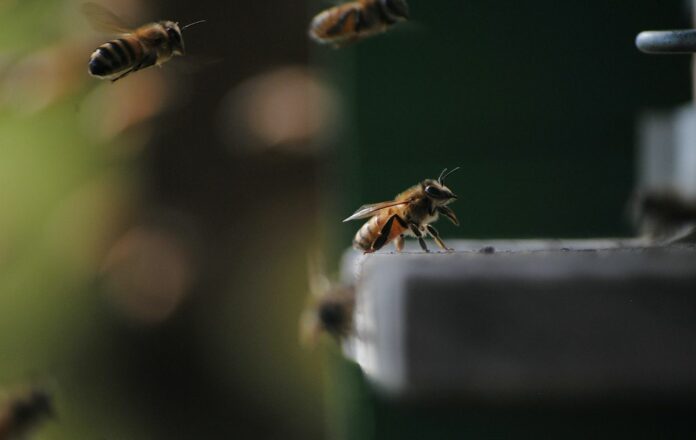Honeybees: The Unlikely Heroes of Urban Microbial Surveillance
A recent study published in Environmental Microbiome suggests that urban honeybees may offer a glimpse into the microbiome of the cities they frequent, providing valuable information about both hive and human health.
Cities, while designed for human habitation, are also home to a vast array of other species, making it crucial to comprehend this diverse landscape for both urban planning and human wellbeing. Nonetheless, collecting microbial samples across large city areas can be a daunting and time-consuming task.
As part of a pilot study, Elizabeth Hénaff and her team explored the possibility of using urban honeybees (Apis Mellifera) to collect microorganism samples from cities. Honeybees are known to forage up to one mile from their hives in urban environments, making them ideal candidates for this research.
The researchers collected a range of materials from three hives in New York and discovered a diverse range of genetic information, including that of environmental bacteria, in the debris that had gathered at the bottom of the hives.
Follow-up hive debris samples in Sydney, Melbourne, Venice, and Tokyo suggested that each location had its own unique genetic signature as observed by honeybees.
The team’s analysis of the hive debris samples from various cities revealed interesting insights. For instance, in Venice, the genetic data was mainly dominated by fungi related to wood rot and date palm DNA.
In Melbourne, Eucalyptus DNA was predominant in the sample.
In contrast, the Sydney sample had low levels of plant DNA but contained genetic data from a bacteria species that breaks down rubber, namely Gordonia polyisoprenivorans.
The Tokyo samples contained plant DNA from Lotus and wild soybean, as well as the soy sauce fermenting yeast Zygosaccharomyces rouxii.
The researchers also compiled genetic material from the hive debris for Rickettsia felis, a pathogen that causes ‘cat scratch fever’ in humans when transmitted via cat scratches.
While these findings indicate the potential of this method for surveillance purposes, they are still preliminary, and it is too soon to suggest that it is an effective means of monitoring human diseases.
Moreover, the hive debris also contained microorganisms associated with honeybees, which are likely present in the debris due to the bees themselves.
The researchers analyzed 33 samples from hives in the four cities and detected the presence of known bee microorganisms, indicating a healthy hive.
However, in some hives, they also found bee pathogens such as Paenibacillus larvae, Melissococcus plutonius, or the Varroa destructor parasite. The authors suggest that these findings suggest that hive debris can be used to evaluate the overall health of the hives.
In conclusion, the researchers propose that honeybee hive debris collected by bees can provide valuable information on the microbial landscape of urban environments.
They further suggest that this method could be employed in conjunction with other measures to assess the microbial diversity and health of both cities and honeybees.
Source: 10.1186/s40793-023-00467-z
